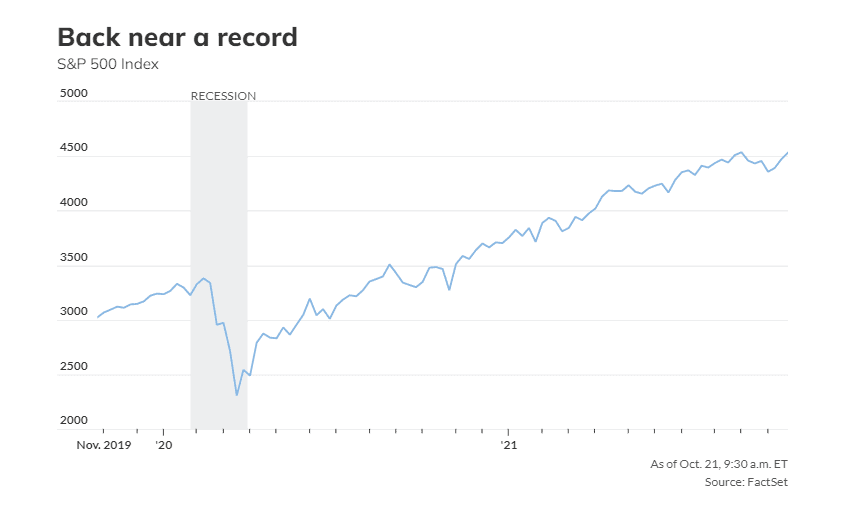U.S. stock futures took a step back Thursday, consolidating after a rally from last month’s lows that has brought indexes to a whisker of their record highs.
What’s happening
- Futures on the Dow Jones Industrial Average YM00 fell 105 points, or 0.3%, to 35372
- Futures on the S&P 500 ES00 lost 0.3%, or 12 points, to 4516
- Futures on the Nasdaq 100 NQ00 fell 0.2%, or 34 points, to 15344
On Wednesday, the Dow Jones Industrial Average DJIA rose 152 points, or 0.43%, to 35609, the S&P 500 SPX increased 17 points, or 0.37%, to 4536, while the Nasdaq Composite COMP dropped 7 points, or 0.05%, to 15122. The S&P 500 finished just 0.02% from its record close.

What’s driving markets
A solid start to third-quarter earnings season has helped investors put the nervousness of September behind them, even as concerns over inflation, COVID-19 and China’s economy still linger.
“It’s an impressive turnaround from where the narrative was just a few weeks ago, when the index had fallen by over -5% from its peak as concerns from Evergrande to a debt ceiling crunch set the agenda. But the removal of both risks from the immediate horizon along with another round of positive earnings reports have swept away those anxieties,” said Deutsche Bank strategists led by Jim Reid.
Evergrande HK:3333 was back in the headlines on Thursday after the property developer ended talks to sell most of its property services division.
On the earnings front, International Business Machines IBM missed revenue estimates, and Tesla TSLA offered a cautious outlook after beating third-quarter earnings expectations. Results from American Airlines AAL, Southwest Airlines LUV, and after the close, Intel INTC, are due.
Some Federal Reserve officials in recent days, including Fed Governors Christopher Waller and Randal Quarles, and Cleveland Fed President Loretta Mester, appear to be laying the groundwork for interest-rate hikes next year if high inflation persists.
Thursday will see a number of economic releases, on jobless claims, Philadelphia-area manufacturing, existing home sales and leading indicators.

